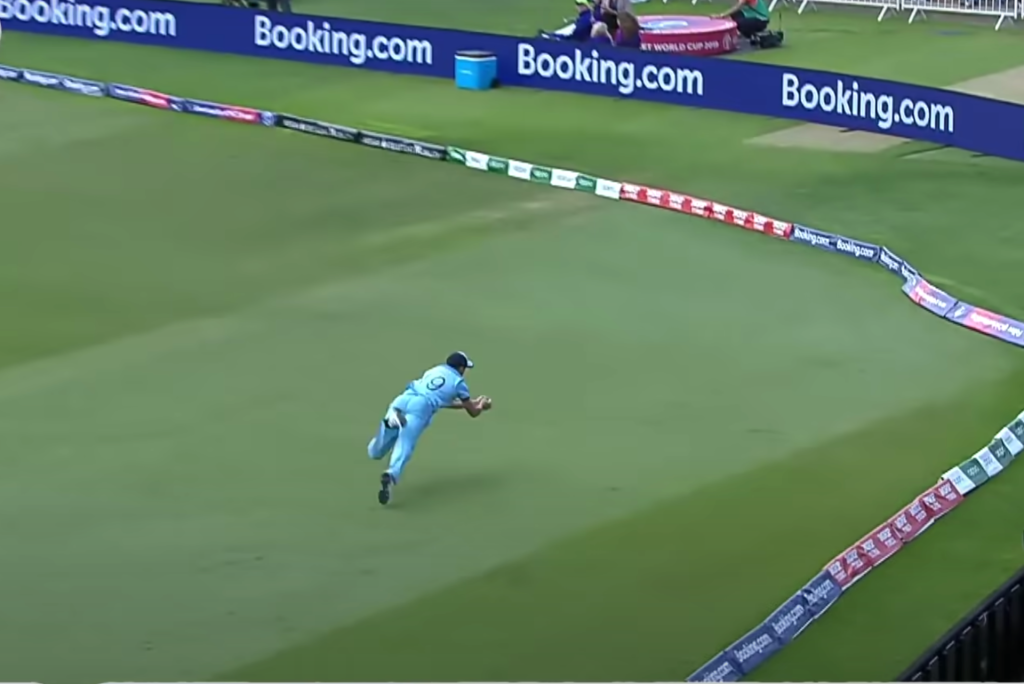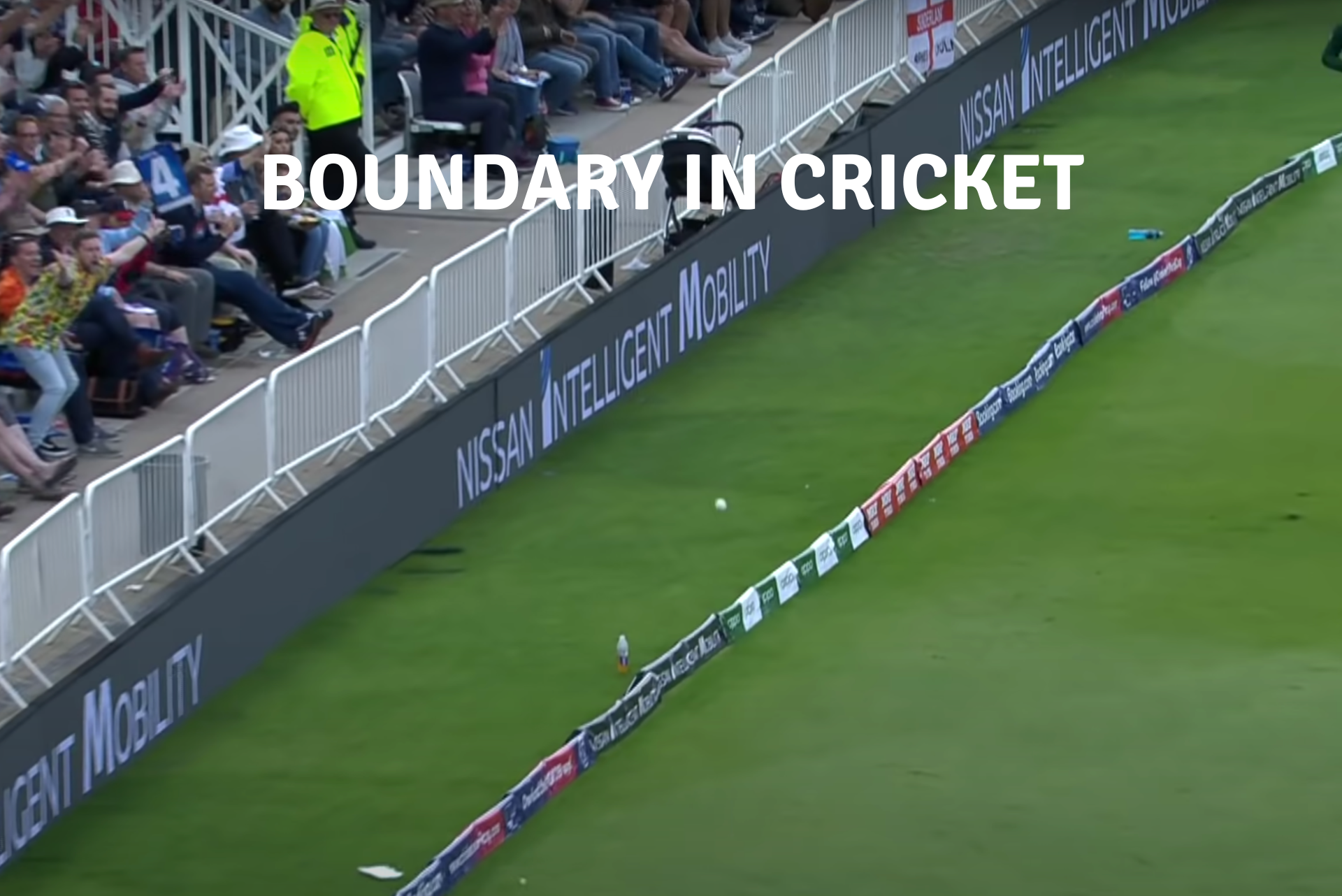Understanding The Concept Of Boundary In Cricket – A Comprehensive Guide
Cricket, a sport rich in tradition and intricacies, revolves around the concept of boundaries. Boundaries play a pivotal role in scoring runs and influencing the strategies employed by both batsmen and bowlers.
In this comprehensive guide, we will delve into the world of boundaries in cricket, exploring their definition, calculation, significance, and impact on the game.
What is a Boundary in Cricket?
A boundary in cricket refers to the act of hitting the ball and crossing the designated boundary line, resulting in the awarding of additional runs to the batting team.
Batsmen typically score boundaries when they hit the ball, causing it to cross the perimeter of the playing field without touching the ground or being caught by a fielder. The primary purpose of boundaries is to score runs more efficiently and maximize the team’s total.
Calculation of Boundary in Cricket
Understanding how boundary in cricket is calculated is essential to appreciate the dynamics of the game. Let’s delve into the explanation of boundary measurements, explore the boundary length at Sydney Cricket Ground (SCG), highlight notable examples of the longest boundaries in the world, and compare boundary lengths in different cricket stadiums for a comprehensive understanding.
Measurements of Boundary in Cricket
Boundary measurements are crucial for determining the minimum distance a batsman needs to hit the ball to score a boundary in cricket. The boundary length is measured from the center of the pitch to the perimeter of the playing field.
This ensures a standardized approach across different grounds and formats of cricket.
Comparison of boundary in Cricket: lengths in Test, ODI, and T20 cricket
Let’s explore the various lengths of boundaries in different cricket formats:
- Test Matches: Test cricket traditionally features larger boundary lengths to promote a strategic approach and reward shot placement and patience.
- ODI and T20 Cricket: Limited-overs formats such as T20 often have shorter boundary lengths to encourage aggressive batting and high-scoring matches.
Sydney Cricket Ground (SCG): Exploring the boundary length in meters
The iconic Sydney Cricket Ground (SCG) gains renown for its rich history, vibrant atmosphere, and demanding playing conditions. Depending on the match format, the boundary length at SCG varies, offering an intriguing challenge for both batsmen and bowlers to navigate.
On average, the boundary length ranges between 60 to 70 meters for Test matches. Longer boundaries demand power and precision from batsmen. In limited-overs cricket, the boundary length reduces to 55 to 65 meters. This provides batsmen with slightly more scoring opportunities while still requiring careful shot placement.
The Longest Boundary in the World: Notable Examples
Certain cricket stadiums boast the longest boundaries, which can be daunting for batsmen aiming to hit sixes. Let’s explore a couple of notable examples:
- Eden Gardens, Kolkata: With a rich cricketing heritage, Eden Gardens is an iconic stadium in India. The longest boundary at Eden Gardens stretches up to 85 meters, challenging batsmen to generate substantial power and precise timing to clear the ropes.
- Melbourne Cricket Ground (MCG): As one of the largest cricket stadiums globally, the MCG presents its own set of challenges. The boundary length at the MCG measures around 80 meters, testing the skills of batsmen who must combine power with technical proficiency to hit boundaries.
Comparison of Boundary Lengths in Different Cricket Stadiums
Boundary lengths vary across different cricket stadiums. They influence the dynamics of the game and require players to adapt their strategies accordingly.
Let’s consider a few examples:
- Trent Bridge, Nottingham: Known for its picturesque setting, Trent Bridge features relatively shorter boundaries. The average boundary length at Trent Bridge ranges from 50 to 60 meters, providing batsmen with more scoring opportunities.
- Dubai International Cricket Stadium: As a modern cricket venue in the UAE, Dubai International Cricket Stadium offers boundary lengths that are comparable to other prominent cricket grounds. It strikes a fair balance between bat and ball, contributing to exciting contests.
- The Gabba, Brisbane: The Gabba, famous for its vibrant atmosphere, presents challenges to batsmen with longer boundary lengths. The average boundary length at the Gabba ranges from 65 to 75 meters, demanding power and precision from batsmen looking to clear the ropes.
Comparing boundary lengths across different cricket stadiums reveals the diverse challenges faced by players. Shorter boundaries often result in high-scoring matches, while longer boundaries can favor bowlers, emphasizing the strategic nature of the game.
Rules and Scenarios for Determining a Boundary in Cricket

- Clean Strike: If the batsman hits the ball cleanly and it crosses the boundary line on the full, without any fielder intercepting it, it is considered a boundary.
- Over the Boundary Line: Even if the ball touches the ground before crossing the boundary line, it can still be counted as a boundary if it crosses the line before any fielder manages to stop it.
- Fielder Interaction: If a fielder touches the ball before it crosses the boundary line, it negates the boundary. The batsmen can score runs based on the number of times they have run between the wickets.
Hitting Sixes: Clearing the Boundary In Cricket
Hitting sixes is an exhilarating part of cricket that thrills players and spectators alike. Let’s explore the techniques and strategies employed by batsmen to hit sixes:
- Power Hitting: Batsmen generate immense power through their shots, using a combination of timing, strength, and bat swing to clear the boundary in cricket.
- Shot Selection: Batsmen choose specific shots, such as lofted drives or hooks, to maximize the chances of hitting sixes based on the delivery’s length and line.
Conclusion
A boundary in cricket serves as an integral aspect of the game. They enable batsmen to score runs more efficiently and influence match outcomes. We have explored the definition of boundaries, their calculation, significance, and impact on various formats of the game.
Understanding the concept of boundaries enhances our appreciation for the skills and strategies employed by cricketing legends. As you continue to explore the exciting world of cricket, remember the power that lies beyond the boundary rope.
In conclusion, boundaries are not just physical lines on a cricket field. They are symbolic representations of scoring opportunities, strategic maneuvers, and unforgettable moments in the sport we love.




